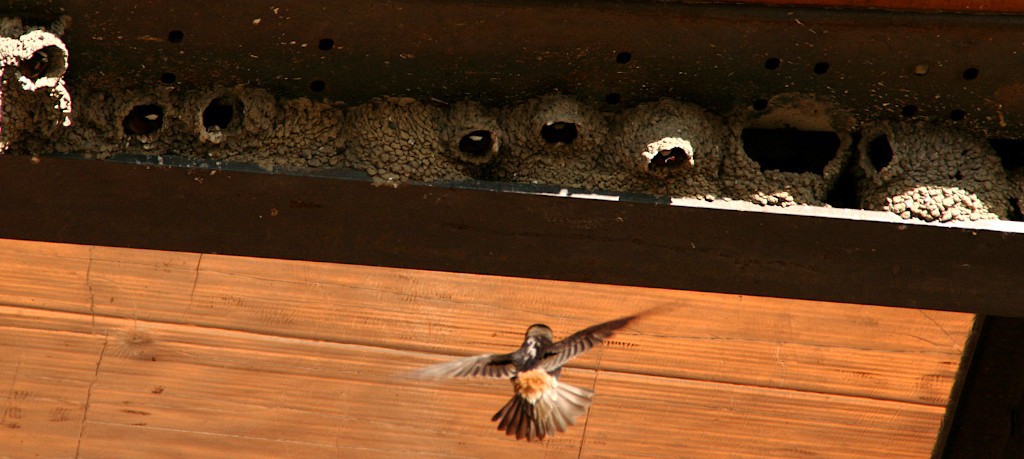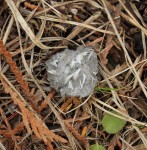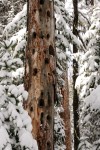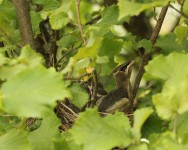Pesky insects can bother us during gardening, barbecues and other outdoor activities but one bird species makes an impressible dent in the insect population for us–swallows. With some swallows eating 60 insects every hour from dawn to dusk, one swallow can eat more than 720 insects each day! By the end of the week, that is 5,000 fewer insects bothering you.
Six swallow species take to the skies of North Idaho to feast on flying insects–barn, cliff, tree, violet-green, northern rough-winged and bank swallows. Purple martins are another swallow species but they do not reside in northern Idaho. However, European starlings are often mistaken for purple martins.
All swallows are aerial insectivores and feed by hawking. Their broad, expansive mouth is well-adapted to catch insects as they swoop through the air. When a swarm of insects is detected, swallows will repeatedly swoop through the swarm to catch multiple insects.
A swallow’s long, pointed wings and streamlined body contribute to its fast, acrobatic flight.
While they all feed on flying insects, each swallow species targets a specific area for foraging. Violet-green swallows and cliff swallows tend to feed over land at a greater altitude than other species. Bank and northern rough-winged swallows usually feed closer to the ground over fields and water, respectively.
Barn swallows cruise low–often within inches of the ground–to feed mainly on flies but they will also eat beetles, bees, wasps, ants, butterflies and moths. Barn swallows, tree swallows and northern rough-winged swallows tend to forage by themselves.
Whereas, bank and cliff swallows are more social in their foraging and nesting. If a cliff swallow can’t find food, it will follow a successful neighbor in its nesting colony to a food source. Cliff swallows tend to forage over grassy pastures, fields, floodplain forests, canyons and towns for swarming insects, bugs, flies, bees, wasps, beetles, lacewings, grasshoppers, crickets, dragonflies and damselflies.
As social foragers, flocks of bank swallows can be seen swooping at least 50 feet above the water or ground for bees, wasps, ants, butterflies and moths.
On the other hand, tree swallows usually forage within 40 feet of the ground for dragonflies, damselflies, flies, mayflies, bugs, bees, ants, wasps, spiders, butterflies and moths.
Rainy weather means fewer flying insects but swallows don’t always go hungry. During bad weather, barn swallows will eat berries, seeds, dead insects on the ground or pluck flies off of barn walls. Tree swallows also eat berries and vegetative matter.
In addition to where swallows forage, they can be distinguished by their flight since seeing their coloration isn’t always possible. Tree swallows tend to glide more in flight than other swallows. Bank swallows tend to fly with shallow, fluttery wingbeats and their flight is less twisty than barn swallows but more direct than northern rough-winged and tree swallows.
When not flying, swallows can often be seen perched on power lines where they are taking a well-deserved break from insect control.






I love the birds! For me, it means more insects are going to get eaten. My trees have been over taken by insects lately.
http://www.schulhofftlc.com/insect_disease_control.html